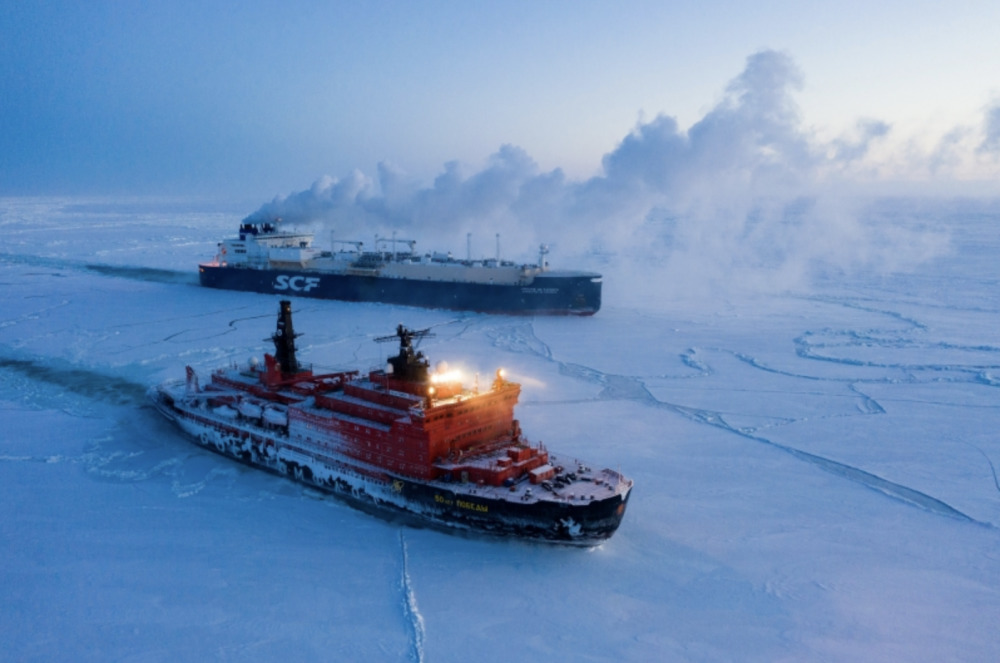Making fun of Suez pile-up, Rosatom promotes Russia’s Arctic route as an alternative
While the Northern Sea Route has ice, it lacks traffic jams.

In a twitter thread, Russia’s State Nuclear Energy Corporation Rosatom poked fun at the trouble for global shipping caused by the wedged cargo ship in the Suez canal and used the opportunity to highlight the benefits of sailing the Northern Sea Route between Asia and Europe.
Some 10 percent of global trade is shipped through Egypt’s 193-kilometer Suez Canal, connecting the Red Sea with the Mediterranean. Since Tuesday, the 400-meter container ship Ever Given container ship has blocked the canal, spiking fears about oil price spikes and worries over European industry’s dependence on on-time delivery of spare parts produced in Asia.
Rescue boats are working day and night trying to release the 224,000-ton vessel.
In Moscow, Rosatom Thursday morning posted several tweets listing the favorable reasons to consider world shipping to look north for an alternative to the Suez Canal Route.
3. You might get stuck in the Suez Canal for days pic.twitter.com/Z6slwdyq53
— Rosatom Global (@RosatomGlobal) March 25, 2021
In 2018 the Russian government appointed Rosatom to be in charge of the Northern Sea Route through a dedicated directorate headed by Vyacheslav Ruksha, the strongman from Murmansk who previously directed of Rosatom’s fleet of nuclear-powered icebreakers.
With a rapidly melting Arctic, the window for sailing vessels north of Russia is increasing in time from year to year. Also, Rosatom is substantially boosting its capacity to keep the Northern Sea Route open for shipping by building new and more powerful icebreakers. Third, the fleet of ice-strengthened LNG-tankers serving the liquid natural gas production facilities on Yamal and in the Ob Bay is expanding with several tens of new vessels.
For Moscow, Arctic shipping is key for industrial development in northernmost Siberia, believed to play an important role in the country’s future economy.
Sailing the Northern Sea Route is about 40 percent shorter from China to European ports compared with sailing the Suez Canal. So far, though, traffic up north has been minimal and the route is by no means a competitor to either Suez or routes around Africa.
The Northern Sea Route provides much more space if you want to use your giant ships to “draw peculiar pictures” Rosatom jokes in another tweet and links an article showing the AIS track of Ever Given forming a giant penis in the Red Sea just before entering the canal.
Ice in the Arctic Ocean is relatively thin this winter, so oil tankers and LNG carriers often travel without being escorted by an icebreaker, Rosatom says and brags about how they provide real-time data on weather, currents, ice motion and other information important for navigating north.
If necessary, as in mid-winter, the Northern Sea Route offers icebreaker escort. Rosatom gives an example on how the cargo ship Sparta III was rescued free by the nuclear-powered icebreaker Vaygach after it got stuck in ice in late December.
Rosatom just recently commissioned its latest icebreaker, the powerful Arktika. Four similar icebreakers are under construction and a funding to construct an even larger icebreaker of the Lider class is already provided by the Russian state.